 Recently I was at a junior golf tournament and witnessed some teenage girls completing their last putts on the last green and when they finished putting and had walked off the green I noticed that one of them had tears in her eyes and running down her cheeks and the other two girls had swollen eyes as if they had cried or were ready to cry. Later on in the clubhouse I noticed that the girl that had been crying when walking from the green was still crying 40 minutes after handing in her card. I wondered to myself what could be so bad or wrong about her golf game that it could make her so upset and unhappy for so long. As it turns out amongst other things her father was putting a lot of pressure on her to perform better in tournaments, and her current level of skill was simply not up to his level of expectation, no matter all the practice she has done and the money he has paid for lessons, travel, etc. And there lies one of the big problems—not just in junior golf, but also in elite level golf; people are working hard to get better, paying for lessons, and they need to ask themselves -- are they getting a good rate of improvement for all the effort and money they put into the game? Have you heard of the term “Return on Investment?” Also called your ROI it is a performance measurement tool in business used to calculate the effectiveness of an investment, or to compare the effectiveness of a number of different types of investments. Compared to many popular sports it is also a relatively expensive sport to play—especially if you want to be very good at it. So let’s take a look at your fiancial investment in golf improvement over 12 months and work out your return on investment. Add up the amount you spend on the following...
2. Your Return on Your Investment = Amount of Strokes Improvement over 12 Months Minus The Cost of Your Improvement (R.O.I) _________________ For example; lets say that your total investment in improving your golf game for 12 months was $5,000.00 and you improved 2 strokes within the 12 month period. $5000 divided by 2 strokes = 2,500 dollars per stroke improvement. This would be your ROI from your investment of time, effort and money. 3. So Your Strokes Improvement for Every Dollar Spent = I have improved __________ strokes in the past 12 months and each stroke was worth $ _______________ So how's your investment in golf coming along? Are you improving your golf score average at a reasonable rate compared to your investment of time, effort and money? If you are not, then why not? To calculate your ROI, the benefit (which is your return) on your investment is divided by the cost of your investment and the result is expressed as a percentage or a ratio. So basically in golf terms it would be the level of reward, improvement or benefit you receive from the effort (investment) you put into practicing, playing and improving your golf. As you know golf is a complex game to play that requires a significant investment of time, effort and financial resources for you to keep improving. The bottom line is that golf improvement is measured by strokes improved on your score average over a defined period of time. So in the following example work out your total strokes improvement for a 12 month period minus your financial investment and work out how much each stroke of improvement has cost you. 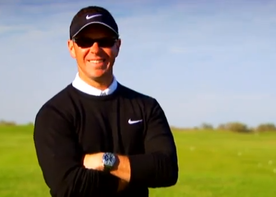 Expert Canadian Golf Instructor Sean Foley Expert Canadian Golf Instructor Sean Foley Why You Should Engage Expert Advice Let’s face it, improving yourself in anything you do is quite often an expensive (but necessary) activity, and obtaining expert advice along the way to help you improve your golf is never cheap, so you cannot waste one single ounce of your available time on poor investments. Notice I said expert advice? Yes that’s right, you must make sure that the advice and coaching you are receiving is from experts. Here’s what Wikipedia say’s an expert is. “An expert is someone widely recognized as a reliable source of technique or skill whose faculty for judging or deciding rightly, justly, or wisely is accorded authority and status by peers or the public in a specific well-distinguished domain. An expert, more generally, is a person with extensive knowledge or ability based on research, experience, or occupation and in a particular area of study.” Source: http://en.wikipedia.org/wiki/Expert If you desire to become an exceptional amateur or professional golfer then going to anyone other than an expert golf consultant for advice on game improvement is likely to drain you not only financially, but also emotionally and physically. This is what David and I would call a bad investment. This means that your gains from your investment of time, effort and money are far less than the amount you spent. This following is an example we have heard many times of a bad investment As we travel around South East Asia we often talk to frustrated parents of junior golfers and hear their stories of where they invested significant sums of money on people purporting to be experts (often sitting behind a big name brand, system/method), and sadly for many it costs them a lot of money and a lot of their time to find out that they are not experts. Not to mention that these junior golfers are quite often very frustrated with their game and their lack of improvement, and some go so far as to give the game up. What a sad state of affairs. You think I’m exaggerating? I’m not.  So the bottom line is that you can receive the best information from the best experts in their field, but if you don’t apply that information the way you need to then improvement (lower scores) will be slow or potentially non-existent. So do yourself a favor and seek out expert consultants in the areas you need to improve, and dedicate the time to performing the routines and rituals exactly as they show you. Also understand that golf is a game where as you get better the rate of progress slows down greatly, and it is at this 'struggle stage' that many good golfers never cross the threshold and become great golfers. Ultimately you have to decide what type of golfer you wish to be. You might want to become a competent amateur golfer who performs well at club level and district level. You might want to become a dominant junior golfer who aims for a university scholarship. You might want to become a top class amateur golfer who represents your country or you might want to become a professional golfer and you make your income from playing in professional tournaments.  Golf is a game of mistakes and imperfect shots Golf is a game of mistakes and imperfect shots Why Reward Never Equals Effort in Golf Golf is a high mistake sport where you will fail many times in your efforts to become excellent at playing—especially in tournaments. No two golf shots are ever the same, and when you bring countless environmental variables into the process it makes the game challenging, most of the time. So it is never a short term focus on improvement; but always a long term process of gradual improvement. So remember that Reward is Not Equal to Effort in Golf. It doesn’t matter whether you are aged 11, 21 or 51 you need a basic plan for improvement that is highly relevant to your needs, and is also flexible enough to change as you change and this is where the principle of specificity comes in. Specificity, Huh? Specificity relates to how your body changes, adapts and evolves as you practice and play golf. Specifically, you are practicing and developing skills in such a way that your body is being shaped to the specific demands of golf, and ideally this shaping should be aimed at playing competitively in tournaments if you want to be an elite amateur or professional golfer. If you are a higher handicap (serious) golfer specificity could relate to improvement in the shape of your golf swing, meaning that as you change and adapt to new information and practice it you are shaping your swing so you can hit specific types of shots such as, driving the ball successfully from the tee or possibly hitting a shot with a specific type of curvature. So the rate of your improvement is related to (amongst other things) the quality and frequency of the golf instruction you receive, the amount of golf shots you hit or golf strokes you perform, the regularity of how often you hit them, and the intensity of your focus on each stroke, or your level of engagement. Your improvement is also related to where you are in your skill learning cycle. In other words, you need to understand that all your skill learning goes from a level of conscious-but not yet competent to a level of unconscious and competent. What does this mean? Well, it simply means that when you receive information from your instructor/coach/consultant, the information must be translated into a dependable motion, and for you to get to this stage of unconscious competent learning (where you don’t have to think about how you do it) you will need to spend a lot of time doing it correctly under supervision and without.  So Who’s Responsible for Your Improvement? Well, the experts you hire are responsible, of course, but you are too. You see it is very possible that you are taking good advice from expert consultant/s, but you are not applying it the way you need to—or the way they shared it with you, and consequently you might discover that you are not improving at a rate that is even close to your expectations. Of course ‘the experts’ should be providing you with some sort of homework in the form of methods, systems, exercises, drills, routines or rituals. This information should be measurable and achievable with consistent practice. Some golf instructors provide a video analysis of your golf swing describing how it looks and shapes up against a famous golfer. We are not talking about this type of feedback, as this is probably more appropriate for a once a month average golfer who hardly plays, and almost never practices. This golfer is not a serious golfer, and so this type of feedback might be OK for them, but it is certainly not for you. Ideally you should be provided with a specific golf development plan that shows you where you are currently and the process or strategy you will need to generate improvement. This does not have to be a comprehensive plan, but it should give you an understanding of how you can generate improvement, and approximately how much time and money is needed to improve your skills. Also you should be under no illusion that the gains or rewards from your golf practice are going to be equal to the effort you put into it. Sometimes they are and sometimes they are not. So what is the gain? The gain is not so much knowledge as it is competency, or more specifically, golf skill competency that translates into lower golf scores. You are investing your time with experts to increase your golf skill competency first and foremost, and then you take those skills into tournaments and learn how to develop them into lower scores. 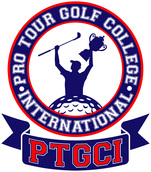 Perth and Jakarta Perth and Jakarta Whichever way you look at it you have chosen a game that is very challenging to play well, so you need the advice and help from experts, and you need to be prepared for a lifelong journey of learning, discovery, setbacks and heartache and be completely dedicated to your long-term improvement. Decide today what you want to achieve from your golf and go to work building a bridge from where you are currently to where you wish to go. Take your time, be patient and really apply yourself to your practice, be especially patient with the learning process and in the days, weeks, months and years ahead you will discover that your investment of time, effort and money showed you the way to the other side of golf improvement. Lawrie Montague and David Milne - Pro Tour Golf College The Professional Golf Tour Training College 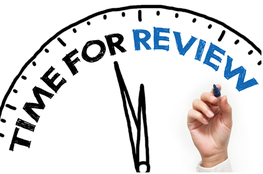 The half-way point in the year is approaching and it’s the perfect time to review your performance. Here are five central areas for reviewing your mental game and effectively carving out a plan to refocus your energy and drive for the second half of the season. Check your Burnout Radar Physical exhaustion and training overload alone are not pre-requisites for burnout. Many athletes do not realise that feeling emotionally drained, experiencing a loss in motivation, or losing sight of your vision for the future can be signs of burnout. Refocusing your goals and plans can help immensely but also planning a short break in the second half of the year is important. You can find the time if you proactively plan ahead and go into your last events feeling energised, rather than hanging out for the season to end. Reconnect with your Strengths and Passion for the Game One of the most energising ways to boost your motivation and connection to the game is to reflect on your mental qualities as a player that brings out your best game. Perhaps you have a “creative mind”, so maximise this by re-engaging your skills in visualisation, seeing and feeling your shots in renewed ways to create stronger commitment to your shot execution.  Use your Stats Effectively to Target the Correct Areas in your Game that Need Work Analyze patterns across multiple seasons and the key question to ask is, “In the first half of the season, which statistics showed the greatest impact on your stroke average?” To explain further, a recent article by protourgolfcollege.com analyzed Yani Tseng’s drop from the top ranks with a closer look at her statistics over the past 7 years. In 2013, Yani showed a significant 20% improvement in sand saves, but interestingly that did not impact her scoring average that year in any way shape or form. The message here is to be careful not to let your subjective assessment of what is working well right now fool you into snap judgments about what is impacting your scores. Don't guess why you think your game has or hasn’t improved because you could be missing crucial details. Log your Training Athletes in physically demanding sports spend a lot of time recording the activities in their training, but golf players seldom do, instead creating random practice sessions based on what feels right that day. There may be days that you create a brilliant intensive practice session that you can replicate again the following week if you log the details of that session. Logging will allow you to track and test your progress across sets and refine your practice time, just as you would when doing the all important skills test. Refine your Preparation For Peak Performance Do you mentally prepare yourself to live and perform your best…consistently? Reflect on your current habits and how helpful they are in achieving your goals. Consider the type of focus you carry into competitive rounds. Do you know what focus works best for you? Do you have a plan to consistently get into your best focus? These questions are a good place to start to gather the resources you need to take action and make helpful tweaks to your preparation routines and habits. David and I are honored to have permission to share with you an article written by PGA Master Professional Michael Hebron. I first saw Michael Hebron speak in 1990 at the PGA Teaching and Coaching Summit in New Orleans and then again at European Teaching Summits in Montreux, Switzerland and with David in Nime, France. Ever since then both David and I have been ardent followers of Michael's work. Enjoy reading his fascinating article and to find out more about Michael and his significant contributions to the game of golf we have included a detailed bio and his contact details at the end of his article.  Studies show our brains simply do not allow us to ‘code’ the golf swing perfectly, so it will repeat time after time. We are all, in a sense, doomed to some level of inconsistent swings. The brain does not plan the swing the same way each time. "Each time” the brain tries to solve the problem of planning how to move, it does it "anew”. FACT. Practice and training can help the brain solve the problem capably. We are NOT wired for consistency like computers or machines. Humans come into the world as "improvisers”. The brain is wired for improvisation because the vast majority of situations that require movement are novel. The nervous system is not designed to do the same thing over and over again. Most players, when performing poorly attribute the result to technique and then spend more time practicing. The pervasive belief is that we can ‘groove’ our swing to the point it will just repeat and repeat, while science has shown that the brain will never allow this to happen. When we accept that golf swings will always be a somewhat variable, then training can take on a more constructive approach. 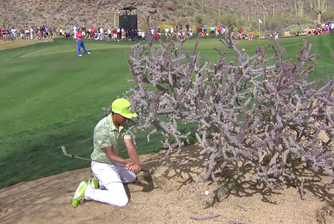 Golf is a random game played in an ever changing and flexible environment, yet most players spend hours on the range trying to hit ball after ball the same way in a fixed and closed environment. A poor training approach for a game that never needs the same swing twice. Keep in mind we cannot predict our score on the first tee and every shot is a surprise. One of the greatest mental skills is the ability to ACCEPT an outcome and move on from it. When you play golf, and have stayed with your processes goals, as well as you possibly can, then you have done your part. Knowing the difference between a "process goal" and an "outcome goal” is a vital factor for success in any area of life.  As humans we tend to send our brain way out into the future and set "outcome goals” around performance, making money or winning tournaments. The problem, with this type of goal you are in a win/lose situation. If we have "outcome goals” we will constantly be disappointed and our emotional unconscious mind will tend to feel unfulfilled and unmotivated. Effective goals are short term, driven by a process, as opposed to result oriented goals. Stay in the process and wanted outcomes will follow. FACT, you cannot control an “outcome goal "like winning the tournament. There are just too many variables at play. Golf may rank #1 in sports for having ‘luck’ influence the outcome of a result. From a brain perspective we could say our conscious mind is concerned about the future. Our unconscious mind, which is the true driver of human behavior, is mostly concerned with the here and now, the present. 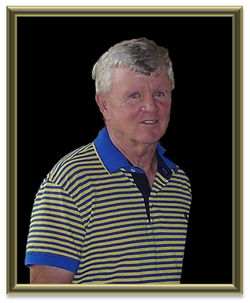 Michael Hebron PGA Master Professional Michael Hebron PGA Master Professional Decades ago Michael Hebron played a key role in orchestrating the first PGA Teaching and Coaching Seminar, bringing together instructors from across the country to share ideas on teaching methods. Following that event, Michael gained the nickname of "the teacher's teacher". Highly respected throughout the international golf community, Michael consults on golf instruction to PGA Switzerland, Italy, France, Finland, Canada, Japan and Sweden. He has given instruction clinics at 30 PGA of America sections. Through his dedication Michael earned the honored status of becoming the 24th PGA of America Master Professional. His book, See and Feel the Inside Move the Outside, was the first golf instruction book accepted as a PGA Master’s thesis. Since then, he has written hundreds of articles for leading golf magazines and authored 4 other books and 3 DVDs. Michael has appeared on The Charley Rose Show, Today Show, The Golf Channel and numerous local cable shows. Golf Magazine and Golf Digest have consistently named Hebron as a member (since their first listings) of America’s Top 50 Instructors. Over the years, Hebron has worked with many successful golfers from the PGA and LPGA tours and several national champions in America and abroad including three time men's major winners. He has also worked with many successful high school and college golfers—but Michael’s pride is working with club golfers. You can contact Michael through his website at http://www.michaelhebron.com/ or through his Facebook page at https://www.facebook.com/neurolearninggolf.live  Do you remember a young golfer from Asia (not South Korea) who is still the youngest male or female winner of 5 major golf championships by the tender age of twenty two? Her name is Yani Tseng and she was the dominant LPGA player from 2008 to 2011, holding the number one spot in the Women's World Golf Ranking for 109 consecutive weeks. She won LPGA Player of the Year in 2010 and 2011 and was 71 under par in the 5 Majors she has won to date. Yani hits it long off the tee averaging a shade under 270 yards, and when you consider Greg Norman in his heyday averaged 276 yards you can understand the advantage Yani has over most of her competitors. Combine her length off the tee and averaging just under 70% in G.I.R. you can understand why she was so dominant. Winning more than US$1.2 million each year from 2008 to 2012, and her earnings in 2011 were over US$2.9 million. Hailing from the Republic of China (Taiwan), during that period she was so popular that upon returning to Taiwan she had the same security arrangements as Lady Gaga did when visited and performed in Taiwan!  Well unfortunately her career has nosed dived since her last win, which was the Kia Classic in March 2012. Yani's world ranking last year was 83 and it does not look like it is going to change any time soon. In the last 14 majors she has missed the cut in seven of them, and her best finish was tied 19th in the 2013 Women's PGA Championship. So what has caused this massive drop in form? I can't find any official report of an injury or explanation so what are we to conclude? The only thing available to us is to take a look at her statistics to possibly come up with a logical reason for the extraordinary drop in performance over the past couple of seasons. Looking at the graph of her competitive scoring average and also total money earned below you will see her scoring average steadily goes up from 2009 and once over 70.12 the wins dry up and the earnings drop dramatically. If Yani's numbers creep closer to 72.50 she will be in danger of losing her card. She will obviously get sponsor invitations into events however if that happens it will be a big hit to the ego and the loss of confidence could be catastrophic. We have obtained these statistics from the LPGA website and looking at it her Total Birdies result of 208 in 2011 (which was her best year), it does not appear to correlate with the wins she had that year and nearly US$3 million she won. If it is correct she could have directed her focus solely on the majors that year, including playing the tougher golf courses for that calender year. This statistic translates to 2.70 birdies for each of the 77 rounds she played in 2011, which is down from 3.95 the year before for the 64 rounds she played. In 2013 and 2014 Yani's birdie average dropped to 3.34 and 3.33 respectively for the rounds played. For followers of our articles here at Pro Tour Golf College since 2011 you will know that world class players on every major tour average close to 4 birdies (on average) for each competitive round they play. It is one of the critical factors required if you wish to become a world class professional golfer. Yani's greens hit in regulation (G.I.R) from 2008 to 2012 averaged 69.22% which is outstanding. But unlike on the PGA Tour where through ShotLink technology the proximity to hole (P.T.H) is measured giving us accurate feedback of the quality of a professional golfers ability to hit greens, we have to speculate that Yani's approach shot proximity to hole was a lot closer from 2008 to 2012, compared to 2013 and 2014. Plus a drop in G.I.R. of 4% to 65.11 from 2013 to 2014 does not help her case either. Another possible reason for her continued drop in performance and earnings could be her decision to change the equipment that took her to the number one position in the World Golf Ranking. After playing the Adams brand of golf clubs since 2009 she ended that relationship and signed with Callaway. It does not seem to be a decision based on dollars, because in 2010 Yani was offered a five year US$25 million deal which included access to a private jet and luxury villa by a Chinese company which she rejected. Yani rejected the offer as it would have required her to switch citizenship from the Republic of China (Taiwan) to China. She continues to use the Titleist ProV1 as her preferred ball. She is not the first golfer (and won't be the last) to change club manufacturer and also experience a career threatening loss of form. The one statistic that has improved out of sight is in the sand save category. In 2013 it improved by over 20%, a massive change in percentage and ranking. But this improvement has not impacted her scoring average in a positive way in any shape or form.  There are unconfirmed reports from a Taiwan news channel that Yani in 2012 took to late night partying after gaining fame which they speculate has hurt her game. In a recent interview she declared "I want to be number 1 again, but I feel now golf is not everything in my life. She talked about working on "the process". What seems a little odd is that this is the very same golfer who smashed it off the tee, went and found the ball and gave it another hit. It was great to watch her play without fear, and that's why people flocked to watch her play. Yani is a golfer who has played full time since she was 10 years old, so 'burnout' could also be a possible reason that has taken her from extraordinary performance on the golf course to average performance. We are huge fans of Yani Tseng and really want to see her get back on top of her game. As history has shown us so many times, a successful professional golfer has to respect their ability and never take it for granted. The game at the top level is so competitive that tampering with your talent quite often leads to those unique abilities disappearing very quickly. And getting them back almost never happens. The LPGA needs golfers like Yani who have a high entertainment value with the crowds, golfers like Yani stimulate interest and growth in the game because they play more like a child without the adult constraints that makes one often feel like golf is played by robots more than creative human beings. We wish Yani all the best for 2015 and beyond. David Milne and Lawrie Montague - Pro Tour Golf College The Professional Golf Tour Training College |
Archives
June 2019
|
Proudly Supported By
Copyright © 2011 - 2018 Pro Tour Golf College
Website Managed By Golf Performance Media
All Rights Reserved
Website Managed By Golf Performance Media
All Rights Reserved






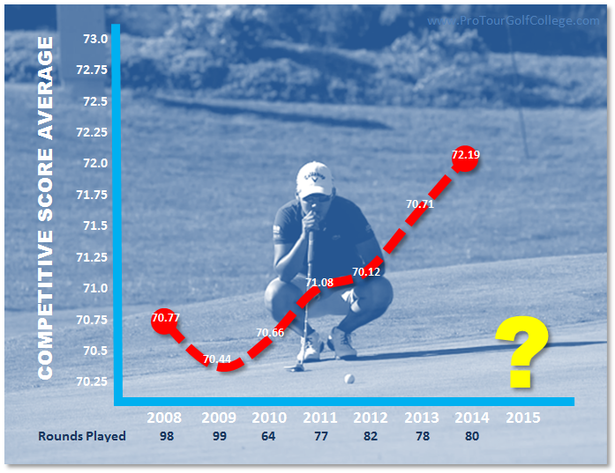




 RSS Feed
RSS Feed



